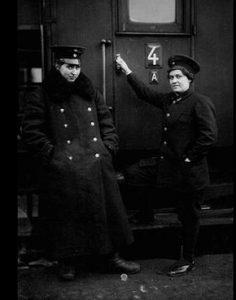 During World War One, there were countless stories of badass women who defied norms and contributed to the war effort in incredible ways. Mary Boden set up and funded a mobile hospital unit on the Western Front that nursed soldiers wounded in Ypres and Somme, serving as a nurse until the end of the war. Edith Cavell, another nurse, saved the lives of many soldiers regardless of what side they were fighting on. Her courageous actions led to her execution in October 1915 by the Germans after helping hundreds of the Allied forces escape from Belgium to the Netherlands. Flora Sandes was remarkable for a completely different reason — she was the only British woman to have officially served as a soldier in World War One and she did so in the Royal Serbian Army. She was seriously wounded by a grenade in hand-to-hand combat and was made a Captain after the war. There is no doubt these bold and heroic ladies deserve to have their praises sung — and they have! The medals of honour they all received are testament to their contribution to the war effort.
During World War One, there were countless stories of badass women who defied norms and contributed to the war effort in incredible ways. Mary Boden set up and funded a mobile hospital unit on the Western Front that nursed soldiers wounded in Ypres and Somme, serving as a nurse until the end of the war. Edith Cavell, another nurse, saved the lives of many soldiers regardless of what side they were fighting on. Her courageous actions led to her execution in October 1915 by the Germans after helping hundreds of the Allied forces escape from Belgium to the Netherlands. Flora Sandes was remarkable for a completely different reason — she was the only British woman to have officially served as a soldier in World War One and she did so in the Royal Serbian Army. She was seriously wounded by a grenade in hand-to-hand combat and was made a Captain after the war. There is no doubt these bold and heroic ladies deserve to have their praises sung — and they have! The medals of honour they all received are testament to their contribution to the war effort.
But after seeing Kathe Buchler‚Äôs series of photographs Women Doing Men‚Äôs Jobs, I‚Äôve been inspired to talk about different women ‚Äì “ordinary” women. I want to talk about those women who didn‚Äôt get medals and didn‚Äôt risk their lives on the front, but who dedicated their war years to helping their country with as much determination and strength as any man.
Kathe Buchler‚Äôs collection of Women Doing Men‚Äôs Jobs photographs is on display for the first time outside of Germany, at the Birmingham Museum and Art Gallery. This collection of photographs from her town in Germany shows intrepid, strong women doing all manner of traditionally male jobs: working as conductors on public transport, in munition factories, agriculture and in dockyards. These photographs provide a remarkable window into the preoccupations of ordinary Germans living and working hundreds of miles away from the fighting. These images could just as easily have been of French or English women. Kathe Buchler‚Äôs striking and insightful photographs remind us that women were the backbone of war. They kept their families and troops fed, they provided weapons and made sure daily services ran. Although often neglected in favour of the commemoration of courageous “boy soldiers,” many young women were as keen as their male counterparts to serve their countries on the front line, and were frustrated by not being allowed to join the forces.
These women were left behind. They went to work every day while their husbands, fathers and sons were sent away to fight. While food was scarce, times were scary and uncertain, and they were surrounded by constant fear, these women worked. They didn’t only do men’s jobs, they did all jobs. In Britain alone at least a million women were formally added the workforce between 1914-1918. As men were conscripted into the army towns and cities were abandoned by their workers and women were suddenly necessary to keep countries running. Women of all classes and backgrounds stepped up to the plate. They worked, raised funds, ran charities, collected food and raised morale.
These ordinary women also deserve to be commemorated because even in the midst of war they did not ever forget that they should be equal to men. In the midst of war, they found the power to strike and demand equality: the women workers on¬†London buses and trams¬†went on¬†strike¬†in 1918 to demand the same increase in pay as men. The strike¬†spread to other towns¬†in the South East and to the London Underground. This was the first equal pay strike in Britain which was initiated, led and ultimately won by women. So to those “ordinary” women across Europe, thanks for setting such a kickass example and showing the world the strength of women in times of crisis.
To end, I want to suggest an alternative title to Kathe Buchler‚Äôs photographs: “Women Working: the Extraordinary Days of Ordinary Women.”
If you’re interested in learning more about inspirational women in the First World War and about their contribution to war efforts, check out the links below:
http://www.iwm.org.uk/history/5-inspirational-stories-of-women-in-the-first-world-war
http://www.iwm.org.uk/history/the-women-war-workers-of-the-north-west
http://www.voicesofwarandpeace.org/
https://www.bbc.co.uk/education/clips/z8vb87h
http://www.bbc.co.uk/guides/z9bf9j6
– Tia Shah
Junior Girl
Girl Museum Inc.
